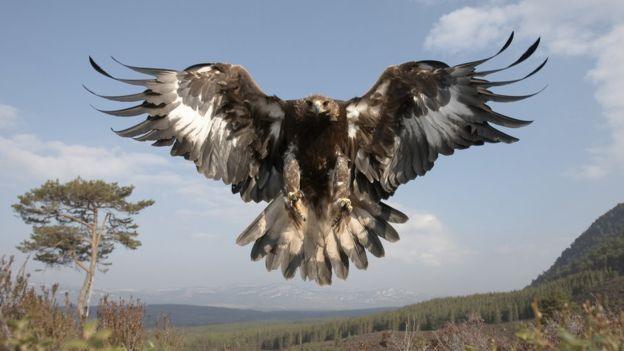'Gamechanger' Scottish wildlife law passes final vote
- Published
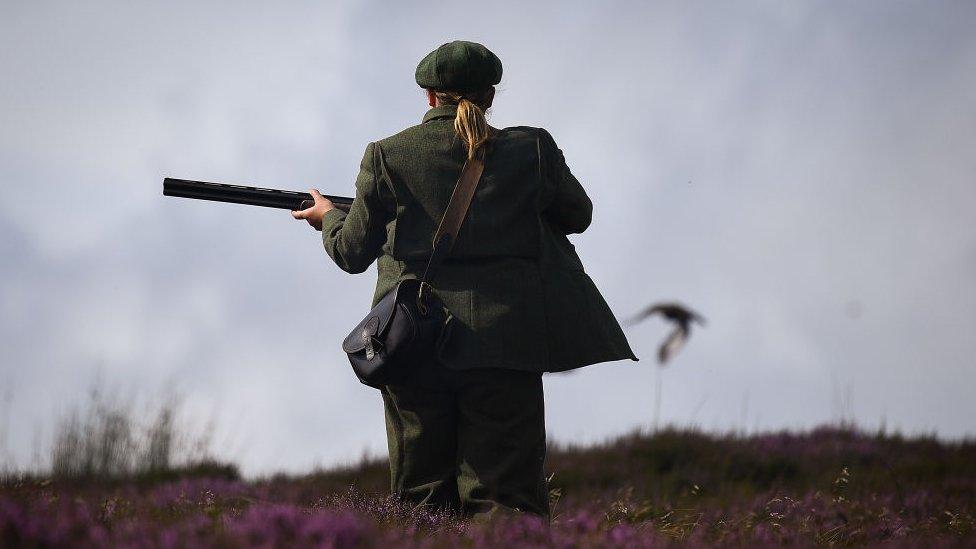
A new wildlife law aimed at protecting birds of prey and regulating the grouse shooting industry has passed its final vote at Holyrood.
The Wildlife Management and Muirburn (Scotland) Bill, external introduces a licensing scheme for land where grouse are shot.
Other measures include a ban on the use of snares and glue traps, and regulation on the use of other traps.
Licences will now be required all year round for muirburn - the controlled burning of vegetation,
The new law also contains powers which could give individuals such as Scottish SPCA inspectors the power to investigate some wildlife crime.
It was passed by 85 votes to 30, with the Scottish Conservatives voting against.
Wildlife campaigner Chris Packham described it as a "gamechanger" which showed Scotland was leading the way with "meaningful change".
But some groups representing landowners claim the new law goes too far and could damage a sector that is valuable to the rural economy.
How will the law protect birds of prey?
Over the years many birds of prey, or raptors, have been shot, poisoned or have simply disappeared on Scotland's grouse moors.
An independent review was ordered after a report from Scottish Natural Heritage, now called NatureScot, in 2017 found a third of satellite-tagged golden eagles had vanished in "suspicious circumstances".
Campaigners believe birds are being killed to stop them preying on grouse stocks.
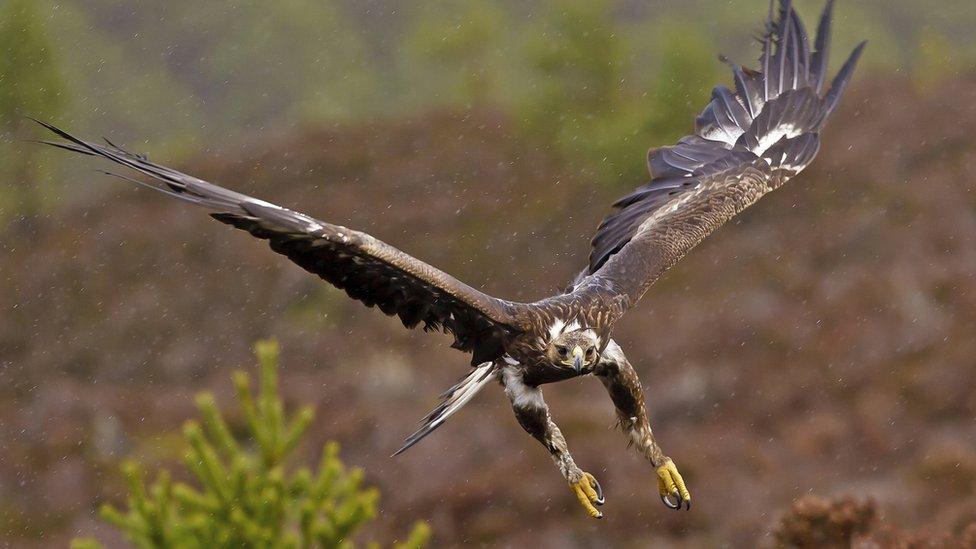
Campaigners believe golden eagles an other birds of prey are being shot or poisoned
Legal protections already existed under the laws such as the Wildlife and Countryside Act 1981 - RSPB Scotland says nearly 60 gamekeeper have been prosecuted since 1990.
But the new licensing scheme for land which is used for red grouse shoots is seen as an important deterrent.
The risk of losing a licence means there is now a financial incentive for landowners and shoot operators to ensure there is no illegal killing of raptors.
What about snares and traps?
The purchase and use of glue traps - trays coated with a sticky substance which were formerly legal for rodent control - is also now banned.
Campaigners say they are particularly cruel, causing animals to die from exposure or hunger.
There is also a risk that other animals such as birds, squirrels or frogs can be caught by them.
Glue traps specifically designed to catch invertebrates such as moths or flies are still allowed.
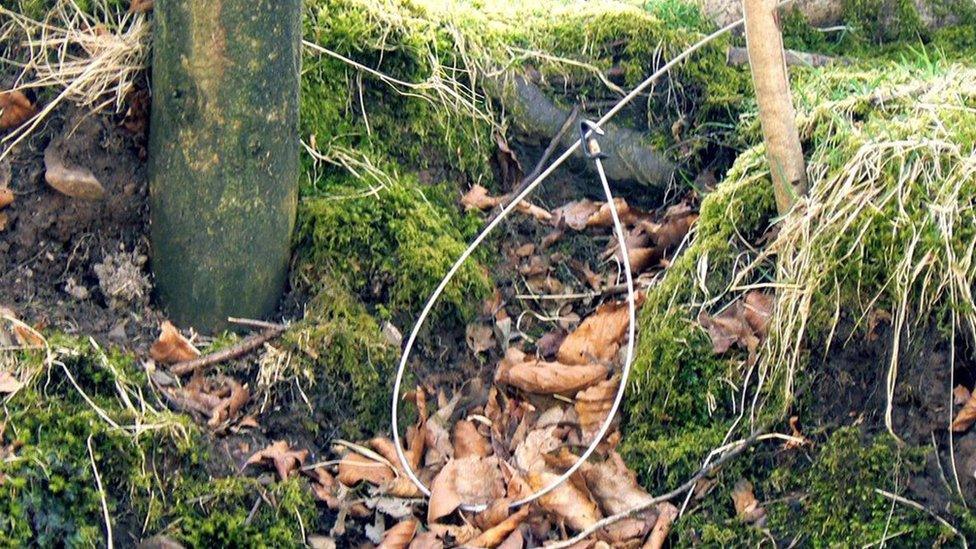
Snares will now be banned in Scotland
Snares - loops of wire which are often used to catch foxes and rabbits - are also banned under the new law.
For other types of trap which are permitted in certain circumstances - live capture or spring traps - there are new licensing and training requirements.
People who use them must apply for a licence number which is displayed on the traps.
What are the new rules on muirburn?
Muirburn is the burning of vegetation to encourage new heather growth for grouse and other animals to feed on.
It has been a land management tool for centuries, and government agency NatureScot says it can have benefits such as reducing the risk of wildfires if done well.
But there is concern it can damage upland blanket bogs which are both an internationally-recognised rare habitat and an important carbon store.
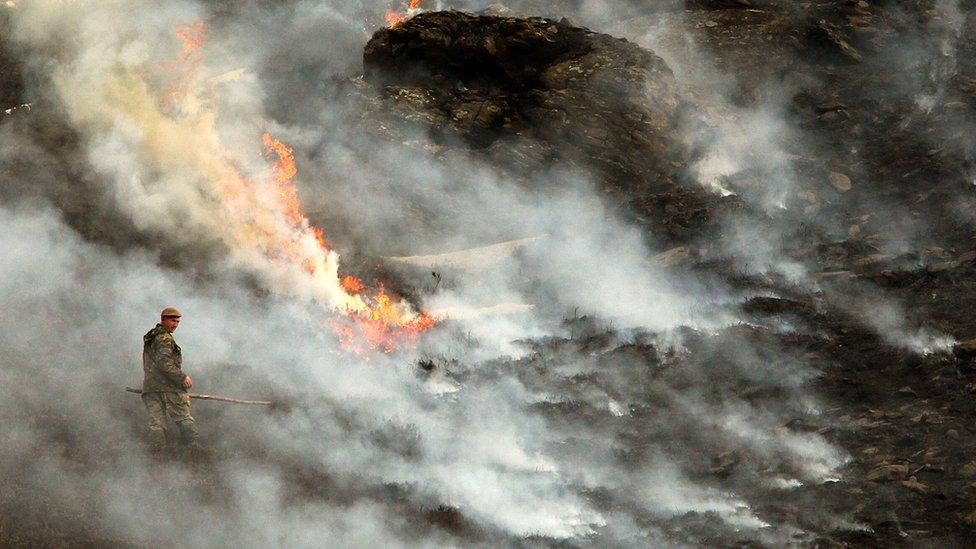
The controlled burning of moorland vegetation will now be licensed all year round
Campaigners say these bogs contain more than 2,000 years of locked up carbon, and when degraded can become a significant source of greenhouse gas emissions.
Muirburn can also directly affect wildlife, with the smoke causing nesting birds to desert their nests, and when done badly there is a risk of starting uncontrolled wildfires.
Until now it was permitted without a licence from 1 October to 15 April but now a licence will be required all year round, and it will only be permitted on peatland in limited circumstances.
What concerns are there over the new law?
Scottish Land and Estates (SL&E) argued strongly against it, describing it as a "legislative sledgehammer" that goes far beyond initial concerns about birds of prey.
It said Scotland already had stringent laws in place on raptor persecution, and incidents are at an all-time low.
There is concern that estates will be unfairly denied licences - and that the potential benefits of muirburn have not been fully recognised.
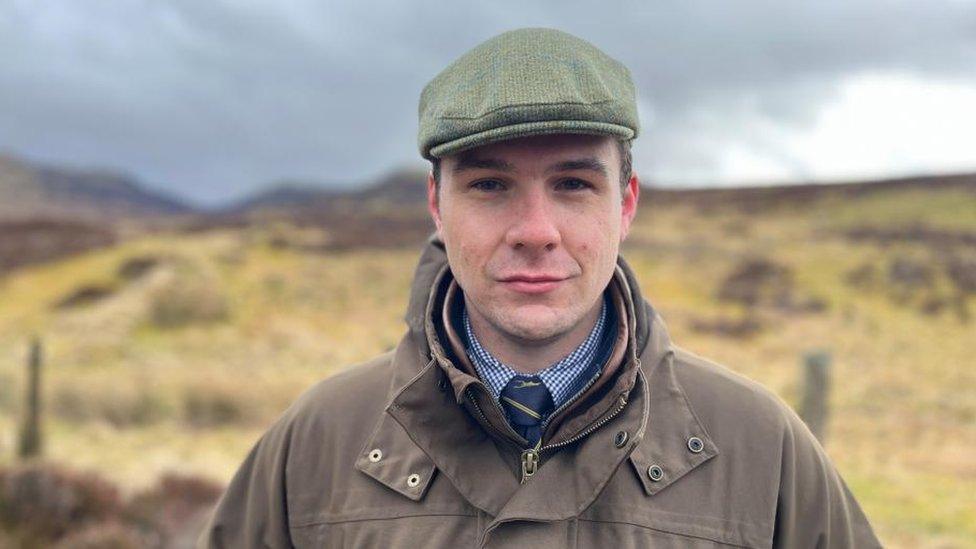
Ross Ewing, from Scottish and Estates, says the law goes far beyond its original purpose
The independent review ahead of the legislation said muirburn can have "both positive and negative effects on carbon storage".
SL&E's Ross Ewing said estates would now have to conduct very significant and "onerous" surveys to identify peatland.
While the licensing scheme initially applies only to red grouse, there are worries it will be extended to other birds such as pheasant.
The Scottish Gamekeepers Association argues that fox control is essential, and it asked for a more modern form of snare called a "humane holding device" to be permitted - but that was rejected.
- Published12 August 2023
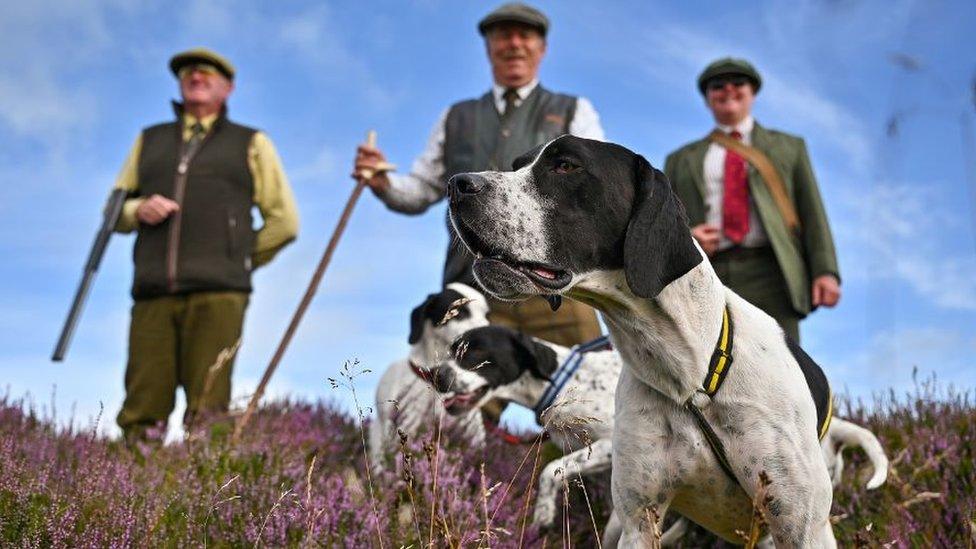
- Published31 May 2017
